And for those who prefer to enjoy the country's landscapes at a slower pace, there are palm-filled gorges to trek, lagoons to splash about in and camels to ride through the desert. Time to hit Morocco's great outdoors.
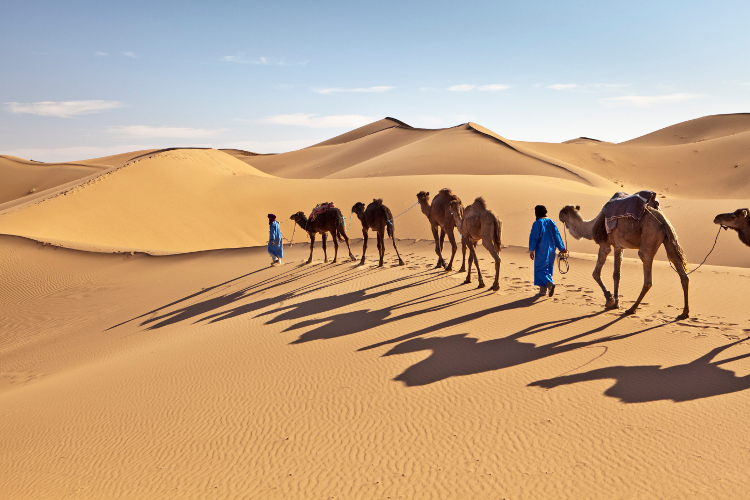
Trekking with camels is an oddly relaxing experience, their swaying humps rocking back and forth and feet swoshing through the sand. From the lonesome southern oasis of M’Hamid it’s a five-day trek across the hammada (stone desert) to Erg Chigaga’s undulating sand sea. Before the damming of the Draa river in 1972 there were improbable settlements out here, and as you cross the Bousnaïna plain you may kick up pottery, fragments of villages long gone. When you reach the dunes they are perfect and pristine and you feel just a little bit guilty climbing their immaculate curves. Night, when it comes, is sudden and dark with a starry sky so bright you’ll feel you’ve journeyed a little closer to heaven.
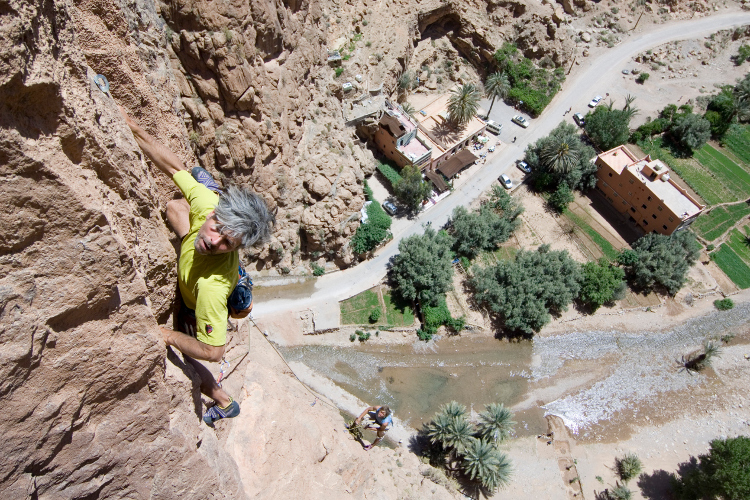
The Todra Gorge is a deep limestone trench that separates the High Atlas from the Sahara. It is 300 metres deep and is riven through by a river and a thin line of palm trees. The walls glow orange and red in shafts of sunlight, and the sounds of driving goatherds and children reverberate off the rock faces. Climbers have been coming here since 1977. In May and June you can spot them splayed on the cliff faces, like lizards soaking up the sun. Some of the routes (French grade 5 to 8) are bolted, others are not, and most of them favour some experience. The Pillar du Couchant, near the entrance to the gorge, offers classic long climbs; the Petit Gorge and Kilimanjaro section are better for beginners; and those blessed with big biceps can attempt Can Güllich's tiered walls.
Hemmed in by the cracked and fissured mountains of the central High Atlas, the Ahansal Valley (1800m) is an awesome natural canvas. Granite cliffs, rock buttresses and skinny slot canyons loom above a jewel-green valley where rafts whip between 4-metre wide limestone walls. In late spring, a multi-day river run is possible from the Bin el-Ouidane dam . Days on the river blur. Monkeys keep pace on the tree-lined banks, Berber children from local villages hitchhike the back of boats, and exhilarating eddies and rapids (grade 2/3 and 3/4) keep your heart pumping. At night the orange glow from campfires flickers off the canyon and the sound of the rushing river lulls you to sleep.
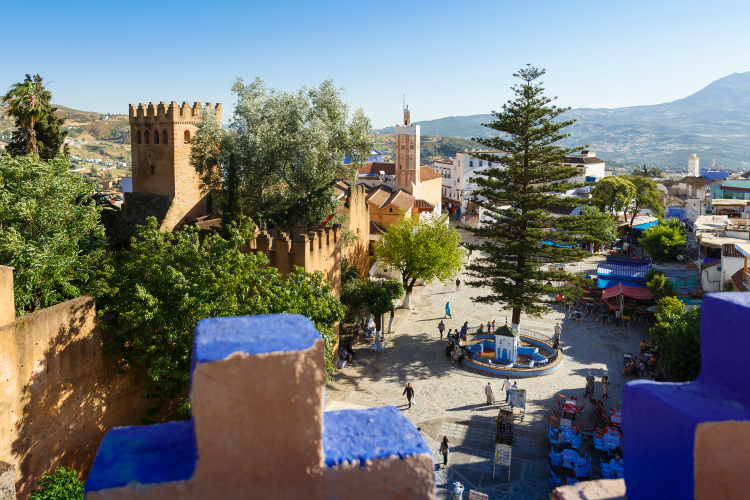
Skip the better-known High Atlas trails and head instead to the Rif Mountains, where Berber mule tracks snake through cedar forests in the Talassemtane National Park. With a bird’s eye view of the Mediterranean, these are the greenest mountains in Morocco, the slopes covered with cultivated kif (cannabis) and a muddle of Mediterranean herbs. The best treks spin out from the bluewashed mountain village of Chefchaouen and wend past limestone crags and stone villages. Berbers originally reigned here but many battles have since raged between colonizers and bandits. Locals will as likely shout out ‘hola’ as ‘bonjour’ or ‘salaam’. Prettier than the Atlas mountains, the area isn’t quite picturesque – the villages are lived in, laundry drapes over hedges and chickens chase at your heels – but sitting peaceably in the sunshine, munching fresh walnuts and looking out over the hills it’s remarkable so few venture here.
The flat-topped mesas and deep gorges of Jebel Saghro are only accessible on foot or by mule. Trade mules for bikes and you’ll have yourself an exhilarating ride of hairpin bends and white-knuckle descents. Riding here is tough, but the rewards are huge. Jebel Saghro means ‘dry mountain’ in Berber, and the massif sits on the edge of the Sahara, a chaos of volcanic pinnacles. It is home to the Aït Atta, a seminomadic tribe famous for their heroic 1933 stand against the French. Here one thousand men held off a French force of 83,000 in the rocky fortress of Bou Gafer. Their black tents crouch on the rocks and the site is still strewn with spent cartridges.
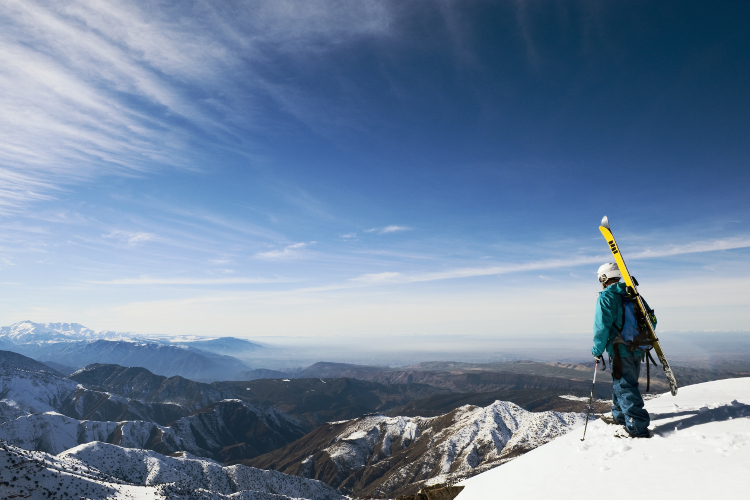 Hit the slopes in Oukaimeden. IMage by Christian Aslund / Photographer's Choice / Getty
Hit the slopes in Oukaimeden. IMage by Christian Aslund / Photographer's Choice / Getty
Skiing in Morocco is a surreal contrast of desert plains and snowy peaks. Instead of fondue, there is tagine, and instead of lifts there are mule trains and skinning (ski-trekking on ‘skins’ or splitboards). Although Toubkal’s tame resort of Oukaimeden gets all the press, the best backcountry skiing is on Jebel Azourki (3677m) in the Central High Atlas. It has long been a sacred mountain for the area’s tribes, who would challenge themselves to scale its summit and make offerings for rain, peace and prosperity. It catches plenty of precipitation from the Atlantic and the snow sits crisp and clean on its broad face. There are no services here, just acres of unmarked snow, yawning descents and hospitable cups of mint tea in small Berber gites.
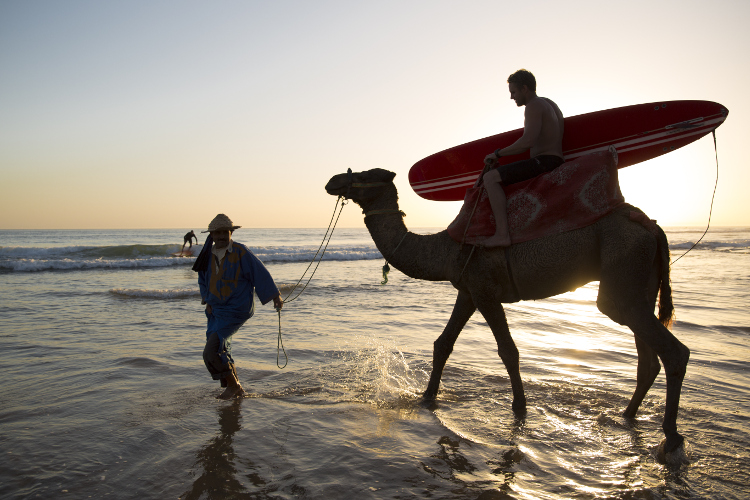
Taghazout was a hippie haven in the Sixties, but now its butterscotch beaches and surging Atlantic waves draw the international surf set. Life for the 5,000 inhabitants of the village also revolves around the ocean. An armada of small fishing boats sets sail every morning, returning come evening with sardines and calamari for beachside barbeques. Peak surf season is from October to April, when the chill of the water pricks at you through your wetsuit and the Anchor Point break becomes a barreling 5m-high monster. Fifteen or so other world-class breaks each have their own character: Draculars has rips and rocks, Boilers offers vertical lips and speed walls; and Imsouane wraps around into the well-protected south-facing bay providing a long, languorous ride. With NW and SW facing coastlines there are breaks for all abilities; although families with kids may want to travel further north to the sheltered lagoon of Oualidia where Moroccan royals attend surf school.